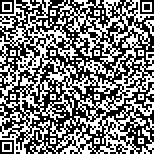下载中心
优秀审稿专家
优秀论文
相关链接
摘要

火山喷发产生的高浓度SO2气体及其远距离输送会对全球气候变化和航空飞行安全产生重要影响。卫星遥感技术以大面积连续观测、高时空分辨率等优势成为大气SO2监测的重要手段之一。作为中国第一颗紫外可见光波段的高光谱载荷,高分五号卫星大气痕量气体差分吸收光谱仪(GF-5 EMI)通过探测地球大气或表面反射、散射的紫外辐射来解析SO2总量的分布和变化。本文首先基于大气辐射传输模型SCIATRAN,选择中低纬地区地表类型均一的海洋区域像元,模拟了典型大气条件下的晴空天顶反照率,用以评价EMI载荷天顶观测光谱的精度。其次,基于TROPOMI L1 Radiance辐亮度数据和DOAS反演原理,经477 nm O4云筛选、光谱定标、慢变剔除、斜柱转垂直柱等步骤后,获得同一火山喷发区域的SO2总量反演结果并与TROPOMI官方offline L2 SO2产品进行对比分析。最后,利用GF-5 EMI UV-2通道观测数据,采用DOAS算法反演获得GF-5 EMI大气SO2总量,并将反演结果与国际同类载荷S5P/TROPOMI SO2总量结果进行比较分析,评判GF-5 EMI在全球火山活动SO2变化监测方面的能力。结果显示,300—400 nm波段范围内,海洋区域采样点EMI观测光谱值低于SCIATRAN模拟光谱值,EMI与TROPOMI观测光谱呈现出相似的系统性偏差。基于高空间高光谱分辨率的TROPOMI L1 Radiance辐亮度数据、315—327 nm、325—335 nm和360—390 nm共3个波段窗口、以及上述DOAS反演原理获得的SO2结果与TROPOMI官方发布的offline L2 SO2产品结果相关性较高,两者的相关系数可达到0.97—0.99,相对偏差在3%—9%。GF-5 EMI能够获取火山喷发SO2排放的时空分布特征,并与国际同类载荷TROPOMI反演结果具有较高的空间一致性,能够满足全球火山喷发监测、预警及其气候影响研究的应用需求。
Sulfur dioxide (SO2) from volcanic eruption and its long-distance transportation has a significant impact on global climate change and aviation safety. Satellite remote sensing technology provides an unprecedented advantage for continuous, large spatial and short-revisit monitoring for atmospheric SO2. GF-5 Environmental trace gas Monitoring Instrument (EMI) with high spatial resolution is the China’s first instrument of hyper spectral measurements with wavelength range from 240 nm to 710 nm, and makes daily global observations of key atmospheric constituents, including ozone, nitrogen dioxide, sulfur dioxide.In this paper, based on the atmospheric radiation transfer model SCIATRAN, the clear sky albedo under typical atmospheric conditions is simulated by selecting the ocean area pixels with uniform surface types in the middle and low latitudes to evaluate the accuracy of the EMI Top-of-Atmosphere (TOA) albedo.Secondly, based on the S5P/TROPOMI L1 Radiance data and the DOAS algorithm, after 477nm O4 cloud screening, spectral calibration, slant column to vertical column conversion, the inversion results of total SO2 columns over volcanic eruption areas were obtained and compared with TROPOMI offline L2 SO2 products.Finally, GF-5/EMI SO2 columns were retrieved by using GF-5 EMI UV-2 band observations and DOAS algorithm, and then the retrieved GF-5/EMI SO2 columns were compared with similar S5P/TROPOMI SO2 columns to evaluate the ability of GF-5/EMI on monitoring global SO2 change from volcanic activity.Results show that, in the band range of 300—400 nm, the EMI spectra of the sampling points in the ocean area are lower than the simulated spectra of SCIATRAN, and EMI and TROPOMI spectra show similar systematic biases. SO2 obtained by using TROPOMI L1 Radiance data, three band windows of 315—327 nm, 325—335 nm and 360—390 nm, and DOAS inversion algorithm are compared with the TROPOMI offline L2 SO2 products, which show high correlations (correlation coefficient between 0.97—0.99, relative deviation between 3% and 9%). Therefore, GF-5/EMI can obtain the daily distribution of SO2 from volcanic eruption. The accuracy of GF-5/EMI SO2 columns can meet the needs of application of global volcano monitoring.

